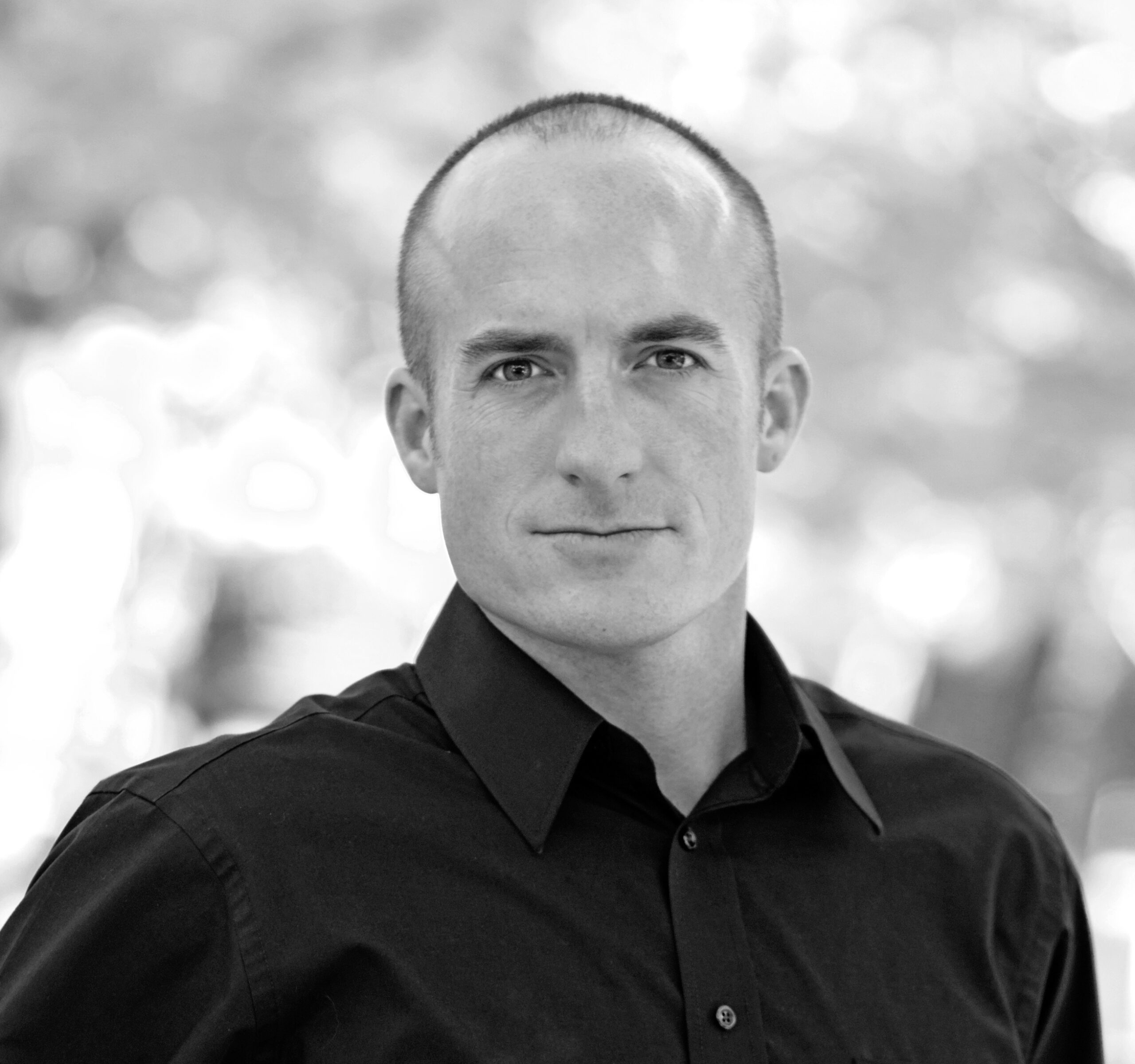Daniel Claussen has arguably held the unofficial title of enviropreneur for the past decade. Several seminal experiences inspired him to move away from traditional nonprofit conservation and focus on a road less traveled: leading efforts to harness private capital markets for environmental and social good.
In 2005, after receiving an undergraduate degree in environmental studies from the University of Montana, Claussen found himself in San Francisco brokering conservation land deals. His tenure at the American Land Conservancy came during a period when public funding for land conservation was drying up and the country was edging toward the onset of the global financial crisis. San Francisco was a hotbed for Claussen to glean inspiration from the disruptive and entrepreneurial fervor of Silicon Valley tech startups.
Watershed Moments
It was two former Secretaries of the Interior that ultimately ended the first phase of Claussen’s conservation career. The first was Stewart Udall. About six months before the renowned statesman passed away in 2010, Udall bluntly told Claussen that what he was doing just wasn’t enough. Udall summarized these thoughts in his famous, final article entitled “A Message to Our Grandchildren.” During the same time period Claussen was working on a project with former Secretary Bruce Babbitt, who echoed Udall’s message, spelling out how the old model for conservation was broken.
These pivotal conversations put the final nail in the proverbial coffin for Claussen. He began to re-examine the basic environmental equation, as Peter Forbes describes it: protecting nature from people through laws. “The equation was turned on its head: humanity and nature benefit through optimal relationships,” says Claussen. “For me, the bottom-line broker in those relationships is the market.”
As Claussen’s generation was launching the Occupy Wall Street movement, it occurred to him that instead of being the enemy, mainstream finance held the single greatest leverage point for creating positive social and environmental impacts.
“I realized that the growing social needs between government and business would never be addressed at scale through the nonprofit sector,” he says. “My generation’s ‘social entrepreneurs’ were really the only great hope I could see. Investment capital for these innovators was the greatest limiting factor. That’s when my purpose became very clear: Fund the innovations of my time.”
Discovering a New Investment Idea
As these ideas were crystallizing, Claussen discovered the emerging field of Impact Investing. Impact investors actively seek to place capital in businesses, nonprofits, and funds that can harness the positive power of enterprise to generate a measurable, beneficial social and environmental impact alongside a financial return. This type of investment can be made across asset classes, occur in developed and emerging markets, and target a range of returns from below-market to market rates, depending on the circumstances.
Specifically, Claussen stumbled onto an investment tool called Program Related Investments (PRIs). These investments are made by private foundations that act like a grant for tax purposes because they are counted toward a foundation’s five percent charitable distribution requirement.
Although foundations control approximately $700 billion in assets, they are investing less than 1/10th of 1 percent in impact investing—largely due to a lack of education and structural barriers within the foundations.
My generation’s ‘social entrepreneurs’ were really the only great hope I could see. Investment capital for these innovators was the greatest limiting factor. That’s when my purpose became very clear: Fund the innovations of my time.
Created in 1969, PRIs remained widely unknown until foundations, such as the Bill and Melinda Gates Foundation, used them as an equity investment in a pharmaceutical company creating vaccines for the developing world. To qualify as a PRI, the primary intent of the investment must be to further charitable purposes. As a result, most PRIs are made at below-market rates.
“The big take-away,” according to Claussen, “is that PRIs are the only branch of capital in our private markets that can provide the high-risk, below-market rate terms to fund early-stage technology innovation, social ventures in markets with slim margins, and in high-risk emerging markets.”
A Tool for Land Conservation
How have Program Related Investments been used in a conservation context? Of the nearly 70,000 charitable institutions in the United States, only a few hundred employ PRIs. Of those institutions, only a handful invest in specific conservation activities. Luckily, this is changing.
There are several ways PRIs can be used to invest in conservation. For example, they can provide subordinated debt capital—a loan that ranks below other loans—for conservation real estate, invest in cap-and-trade fisheries, or invest in natural resource focused companies that create engineered wood products.
At the time Claussen discovered impact investing and PRIs, he began working with Prize Capital LLC, a venture philanthropy group implementing innovative financing techniques to facilitate radical environmental breakthroughs. Prize Capital initiated the INOGO project at Stanford University’s Woods Institute for the Environment. The goal is to improve social and economic factors, such as education and employment, while supporting the integrity of both marine and terrestrial ecosystems on which local communities of the Osa Peninsula of Costa Rica depend. Claussen focused on using PRIs to scale a landscape-level land acquisition and social venture strategy—a form of investing that provides capital to businesses deemed socially and environmentally responsible—across the peninsula.
The Enviropreneur Institute
While Claussen was investigating PRI opportunities with Prize Capital, he fortuitously came across PERC’s Enviropreneur Institute. He was excited to find a group thinking about environmental problems from a market-based perspective, and immediately submitted an application with the idea of creating a mechanism to utilize PRIs for his efforts with Prize Capital.
It was during his PERC fellowship when Daniel and I were introduced. I was already working with a team of conservation finance professionals to explore the development of a Conservation Investment Note—a unique fixed-income, fixed-rate instrument, similar to a bank certificate of deposit. This investment tool is designed to offer institutional and retail investors an opportunity to go beyond charitable donations and earn a modest return from investing in working lands conservation in the United States.
While earning investors a return, the Conservation Investment Note also creates more flexible and longer-term financing opportunities for the land conservation community. Repayment mechanisms can include fee-simple or easement sales to government or nonprofit groups, charitable donations, and sustainable timber sales.
Over the past several months, Daniel and I have been working to advance the note idea, exploring how it could be used to help change the face of public land restoration efforts, timber sales, and partnerships with private land conservation efforts through an investment platform available to both accredited and non-accredited investors.
Daniel has also worked with Stephanie Gripne, a 2006 enviropreneur fellow, to launch the Impact Finance Center, a think tank at the University of Denver focused on market research, education, and philanthropic advisement. This work continued to expand his interest in the use of PRIs.
Today, Daniel is in the midst of pursuing his primary passion for PRIs, what he calls “big step” social innovation. Currently, venture capital is the only investment capital on the market that is focused on innovation. The problem is that venture capital is fixated on technologies that are on the verge of commercialization with the potential for large returns, which results in “small step” innovations and social outcomes as a secondary goal. “You can’t put a square venture capital peg through a round social venture hole,” says Daniel. “There’s this huge R&D and startup funding gap for early stage innovators, and frankly for the emerging social venture sector in general.”
My role is straightforward: create opportunities for investors to fund breakthrough technologies in the markets that will define our future.
Seeing the potential of PRIs for early stage innovation brought Daniel back to work with Prize Capital to advance initiatives addressing technological advancement in the fields of environment, energy, and health. In addition to advancing water and healthcare innovations, Prize Capital is working with large utility, oil, and coal companies to advance technologies that can cost-effectively recycle carbon emissions from power plants. With a long life remaining for the existing energy infrastructure, a retrofit breakthrough is wanted to harmonize the conflicts between providing reliable, affordable baseload electricity and lowering carbon emissions. Prize Capital is working to establish a Carbon Capture and Sequestration (CCS) Test Center at a power plant where top technology teams can accelerate their innovations at scale. The R&D teams working to test new technologies at scale at the test center may need the type of capital required to achieve breakthroughs in CCS technology.
Summing up the Vision
It takes an enviropreneur like Daniel Claussen to see beyond traditional conservation approaches and recognize opportunities to leverage private capital into land conservation and technological solutions to solve pressing social and environmental challenges.
In Daniel’s words, “My role is straightforward: create opportunities for investors to fund breakthrough technologies in the markets that will define our future.”






